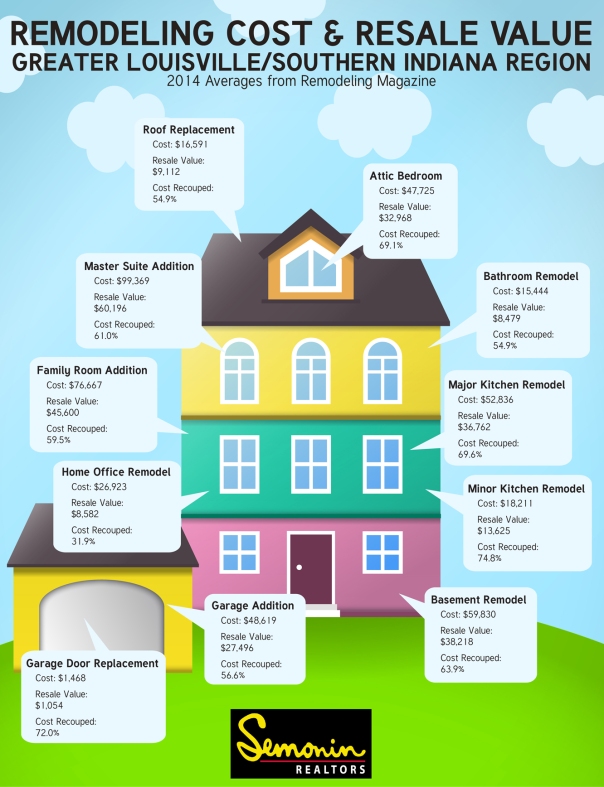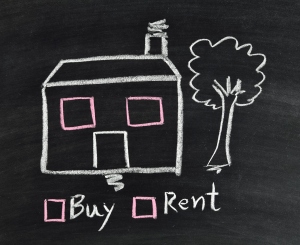Category Archives: Owning
Keep a Home Inventory for Insurance Purposes
 No one ever wants to think about something bad happening to their home, such as being destroyed in a fire or severely damaged by another catastrophe. However, such things do happen whether you are expecting them or not. Many homeowners take comfort in their homeowner’s insurance policy, but the truth is that insurance policy may not be as protective as you might think if you don’t know or can’t remember everything that was destroyed in your home. Think about this for a moment. Without looking, can you list every kitchen utensil or cookware item you have in your drawers and cabinets? How about every cleaning product under the sinks or in closets? Do you know the brand and model of your appliances and electronics? To receive the proper amount of money from your insurance company after a fire or other disaster, you will need to answer each of these questions and many, many more. You may think, “Oh, that will never happen to me”, but we guarantee that neighbor or friend, or family you know from church or school,
No one ever wants to think about something bad happening to their home, such as being destroyed in a fire or severely damaged by another catastrophe. However, such things do happen whether you are expecting them or not. Many homeowners take comfort in their homeowner’s insurance policy, but the truth is that insurance policy may not be as protective as you might think if you don’t know or can’t remember everything that was destroyed in your home. Think about this for a moment. Without looking, can you list every kitchen utensil or cookware item you have in your drawers and cabinets? How about every cleaning product under the sinks or in closets? Do you know the brand and model of your appliances and electronics? To receive the proper amount of money from your insurance company after a fire or other disaster, you will need to answer each of these questions and many, many more. You may think, “Oh, that will never happen to me”, but we guarantee that neighbor or friend, or family you know from church or school, 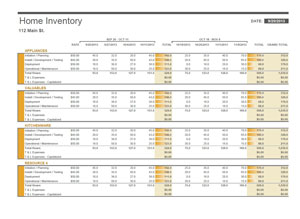 thought the exact same thing before it did happen to them. Creating a detailed home inventory is a responsibility that every homeowner should take the time to do.
thought the exact same thing before it did happen to them. Creating a detailed home inventory is a responsibility that every homeowner should take the time to do.
To start creating your home inventory, go around your house and make a list of each major item, including as much detailed  information as possible. For appliances and electronics be sure to make note of the brand, manufacturer, model and serial number, when you purchased it and the price you paid. For other big ticket items such as collectibles, art, and jewelry, try to keep sales receipts or appraisals together and even scan them for further safe keeping. It may take some time, but it is important to go
information as possible. For appliances and electronics be sure to make note of the brand, manufacturer, model and serial number, when you purchased it and the price you paid. For other big ticket items such as collectibles, art, and jewelry, try to keep sales receipts or appraisals together and even scan them for further safe keeping. It may take some time, but it is important to go  through this process diligently, making sure no valuables, such as silverware, china, or even tools, are overlooked. Create a spreadsheet on your computer by using a program like Microsoft Excel or downloading a template or app from the Internet to create and save this information in an organized spreadsheet.
through this process diligently, making sure no valuables, such as silverware, china, or even tools, are overlooked. Create a spreadsheet on your computer by using a program like Microsoft Excel or downloading a template or app from the Internet to create and save this information in an organized spreadsheet.
After larger items are documented, go from room to room and take pictures of the rest of your belongings on your camera or smart phone. Open up drawers, closets, and cabinets and take snapshots to quickly capture everything that is in your home. Store these photos, as well as your spreadsheet and any scanned documents, on jump drives and store them in multiple places other than your home, such as in a drawer at the office or in a safe deposit box at the bank.
Keeping a thorough inventory of your belongings can be invaluable if you are ever faced with a disaster and have to file a claim. It will also enable you to ensure your insurance coverage is sufficient enough to protect all of your family’s belongings. Supplying these documentations of lists and photos to your insurance provider can help you receive a settlement fast and avoid any insurance nightmares.
HomeServices Kentuckiana Insurance is a part of Semonin’s family of services. Contact a representative today to learn more about your homeowners insurance policy!
Flood & Disaster Insurance
Many homeowners are misled when it comes to what their homeowners insurance actually covers. It is vital that you understand all the details of your policy before you have to use it! Click here to find out what you need to know about flood and disaster insurance. 
Remodeling Costs & Resale Value
Remodeling projects are a great way to add value to your home, but not all projects produce the same return. If you are looking to add value to your home, it is important to know how much certain jobs cost and how much of that money you will get back when you sell the property. Remodeling Magazine recently came out with the 2014 Remodeling Cost vs. Value Report which provides estimates for national averages and for local areas such as the Greater Louisville region. Below are some remodel projects with their average cost and value recouped in our local area. Our averages are generally at or above the national percentage of cost recouped.
The Different Demands of Different Generations
What is your dream home? Ask someone from another generation, older or younger, and you may not get the same answer. Studies have shown the various values and attitudes of different generations have led to some difference of opinion when it comes to what features are most appealing in a home. As taste shifts, so do the elements found most often in real estate.
Baby Boomers (1946-1964)
Generally, baby boomers are hard workers and willing to put in long hours to get what they want. For people in this group, image is important, which is why their idea of a dream home is one that depicts a picture of success. According to a survey by GfK Roper Reports, they rank a state-of-the-art kitchen No. 1 on their “must-haves” list, with walk-in closets, whirlpool baths, fireplaces and swimming pools completing the top five. Boomers, who are becoming “empty nesters”, are well-established in their careers and hold positions of authority. Homebuyers in this generation may be looking to downsize, but more importantly they want a place to show off their life’s hard work—a home that says, “I’ve made it.” So while they may be looking for a property with less square footage, they want a home that is packed full of high-end features. They are also more active than other generations and tend to have a more sophisticated style, so gardens and workshops/studios are appealing.
Generation X (1965-1980)
This generation is of child-rearing age, meaning their homes are very family-focused. The formality of baby boomer homes does not appeal to gen X-ers who want a more causal and comfortable abode. In the midst of parenting, gen X-ers are looking for practicality, a home that can help them eliminate clutter and chaos. For this group, the top two must-haves are state-of-the-art kitchens and plenty of storage with large walk-in closets. Also a popularity for this generation are open-floor plans. With children in the house, they like the idea of having the entire family able to do different things all in the same space. While gen X-ers tend to be very in tune with style and design, their home is not about impressing people. gen X-ers want a home that fits their personal lifestyle. Homebuyers in this generation know what they want and tend to be less prone to settle for less. 
Generation Y (1980-2000)
At this stage in their life, the Millennial generation is all about fun! Their idea of a dream home includes anything and everything that is good for entertainment. Unlike the baby boomers and gen X-ers, gen Y cares less about high-end kitchens, gardens, or workshops. The top of their wish list consists of things like swimming pools, game rooms, fitness rooms and high-tech entertainment centers. In addition to gen Y’s need for fun and entertainment, they are also moving away from their parents and emerging socially. This makes many gen Y-ers crave homes in an urban setting, walkable to shops, restaurants, parks, and nightlife. This “always on the go” type of lifestyle leaves the generation looking for properties that require little maintenance. Many homebuilders have started to focus on new developments that specifically cater to these needs.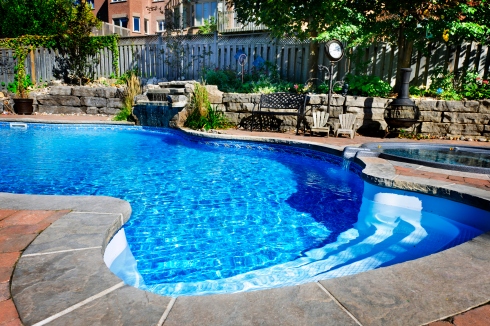
As a homeowner, you may think understanding these differences is of no importance to you. However, owning a home is not just about having a place to live; it is about caring for your investment and increasing its value for resale. To effectively do so, it is important to identify trends to know what would be worth adding to your home and what repairs or renovations would pay off in the end.
Source: MSN Real Estate “Dream homes vary by generation”
*Birth dates are an approximation
The Social Benefits of Owning A Home
Many people buy a home as a financial investment, thinking about how it will grow their overall wealth in the long run. While this is certainty a huge benefit to homeownership, there are also social benefits that many do not realize.
Educational Success
Several studies have been conducted to analyze the relationship between homeownership and educational achievement. There have been many findings that show children of homeowners perform better academically than those of renters. Researchers have found a lower dropout rate for teenage students who are raised by homeowners, as well as a much lesser amount of teen pregnancy occurring with daughters of home-owning parents. Young children of homeowners have shown a tendency to have higher success performances in math and reading and also display fewer behavioral and social problems. Such educational achievements may be credited to certain behavioral characteristics homeowners exercise and expose to their children. For example, when children see their parents managing financials, handling mortgage payments, and taking responsibility for home upkeep and maintenance, they tend to apply the same mannerisms of discipline to their academics. Furthermore, because homeowners want to preserve the value of their home and neighboring homes, they tend to focus more on their child’s conduct and minimize bad behavior.
Civic Participation
Since the value of a home is directly correlated with its location, financially, homeowners have much more at stake in their neighborhoods than renters do. As a result, studies have shown homeowners are more actively engaged in their community and building its value. Since homeowners gain profit from the added appreciation of their home’s value, they tend to spend more time and money maintaining and improving their property, which in turn increases the overall value of the neighborhood. Furthermore, researchers have found the level of community involvement is higher among homeowners than it is renters. Studies have shown homeowners vote in political elections and participate in volunteer work more frequently than renters do.
Health Benefits
Many can argue it is inaccurate to say homeownership directly affects a person’s health because owning a home is also in correlation with other factors that are associated with health outcomes such as income and education. Nevertheless, studies have shown that homeowners are happier and healthier than renters. Despite their level of income, people who have recently become homeowners have testified to have an increased level of self-esteem, life satisfaction and pride, and a higher sense of control over their lives. This high self-rated happiness and confidence in the ability to do things as well as anyone else has shown to motivate homeowners to also care more for their physical and physiological health.
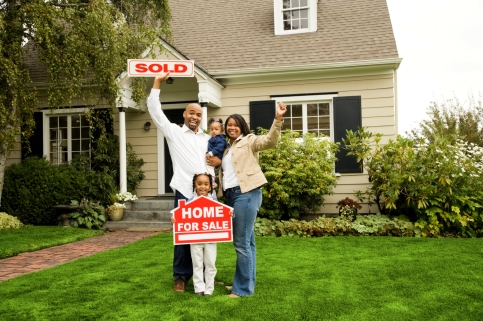
The financial benefits of homeownership are undeniable, and are a major factor that motivates people to purchase a home. However, the perks of owning a home are not just apparent in one’s bank account. Numerous studies have provided evidence that there are also a number of positive social benefits of homeownership, educational achievement, civic participation, and health benefits just being a few.
Source: NAR’s 2012 study entitled “Social Benefits of Home Ownership and Stable Housing”
Beat The Summertime Heat
 It’s officially summer and the things are heating up and will only continue to rise through the autumn months. Keeping your home cool and your energy bills from skyrocketing doesn’t mean you have to sweat it out this season. Use these four tricks to beat the heat!
It’s officially summer and the things are heating up and will only continue to rise through the autumn months. Keeping your home cool and your energy bills from skyrocketing doesn’t mean you have to sweat it out this season. Use these four tricks to beat the heat!
Block the Sun!
And we don’t just mean with the SPF 45 lotion. The sunlight that streams into your house is acting as the last thing you want during the smoldering summer months—a natural heater. By keeping the sunlight out of your home during the day, you’ll keep your home much cooler without having to crank up the AC. So close those blinds and drapes to reduce that solar heat and your energy bill.
Special Tip: Reflect the sun’s rays by using light colored curtains, and block excess air movement by letting them puddle onto the floor.
Flip on the Fans
Keep the air circulating through your home with ceiling and portable fans to maintain a cooler temperature that requires less energy than your AC. Many ceiling fans are reversible with one setting that will push air down and the other that will suck air up. During the summer months make sure your ceiling fan is set on the rotation that pushes air down to keep the cool air in the room instead of escaping through the roof. It is also important to remember that the motors of ceiling fans give off heat, so turning them off when you are not in a room is a good energy saver.
Special Tip: Set bowls of ice water in front of portable fans to chill the air that is being pushed out.
Avoid The Oven
To truly beat the heat, you should stay away from fueling it. Keep your home cool by avoiding using appliances that emit heat, such as your oven, range, or dryer, especially during the hottest time of the day. Try washing laundry during the day and using the dryer at night. Or better yet, take advantage of the summertime heat and hang them up on a line outside. As for not using the oven or range, just consider it a good excuse to order in or go out for meals!
A Clean Filter = A Working Filter
A clean filter is a working filter. The dirtier an air filter is the harder your air conditioning unit has to work to cool your home to the temperature you’ve set on the thermostat. Cleaning an air filter can be a dirty job, but it is vital when it comes to saving money. Many homeowners have found it easier to use the disposable filters that can be swapped out once a month or once every three months. This way you can simply throw away the old filter and avoid having to wash away the dirt and dust by hand.
Relocation or Renovation?

Do you find yourself thinking about all the things that aren’t working for you in your home more than what is? Has all that extra space that was there when you bought the house suddenly disappeared? Has the layout somehow become all wrong? Or perhaps the list of things that need repaired or upgraded seems to be multiplying at a frightening rate. Whatever the reason may be, all signs seem to be pointing to the fact that it’s time for a change. But how do you decide if moving or remodeling is the right change? Here are a few questions to ask yourself:
How do you like your current location?
You can always change what is inside a home, but location is something that is out of your control. Consider what you love about your current neighborhood, and how convenient and important it is to your current lifestyle. Do you enjoy the short commute to places you often go—work, school, shopping? Is the majority of your socializing done with neighbors and families in the area? How safe is the community? Does your home sit on a lot that offers a view like no other? Or the size, layout, and amenities of your yard are irreplaceable? If you find yourself not willing to sacrifice the location of your home, remodeling may be the best option.
What needs to be changed?
If a face-lift is all your current home needs, a remodel may be all you need to provide the upgraded features you desire. However, if it is more space you are seeking a renovation may be more complicated. Many homeowners have successfully expanded the size of their homes with additions and reconfigured layouts, however not every home offers the same potential. How possible is it to add the space you need to your current home? Is there room for an addition? How can the layout be improved? How does the cost of the renovation compare to the value it will add to your home? All of these things must carefully be considered. If the cons of a renovation outweigh the pros, it may be time to move to another house that can fulfill your needs.
How is the current real estate market in your area?
Selling your home and moving is not as easy as you may think; a lot of it has to do with timing. If you are struggling to decide whether you should renovate or relocate, analyze the current market to see how quickly homes are selling and for what prices. Consider how much money you will be able to make when selling your home, and if that amount will be enough to buy a home that meets the needs you need to fulfill.

